Product Design | Hyundai x Stanford

What does the future of mobility look like and how can we influence it?
As autonomous vehicles become more popular, how will they affect our lives? And how can we best adapt to such changes?
AT A GLANCE
This design thinking workshop is hosted by Hyundai and the Stanford Center at the Incheon Global Campus (SCIGC). Stanford students and Hyundai employees collaborate together to envision the future of cars and mobility. My team focused on the prompt: cars and food.
Our work is also documented on https://www.dhyundai.com/.
MY ROLE
Product Design
In this workshop, I was a key contributor in conducting user research. I was also the primary product designer on the team–from sketching and ideating to manufacturing the low-fidelity prototype.
March – May 2022
Stanford, CA
TEAM
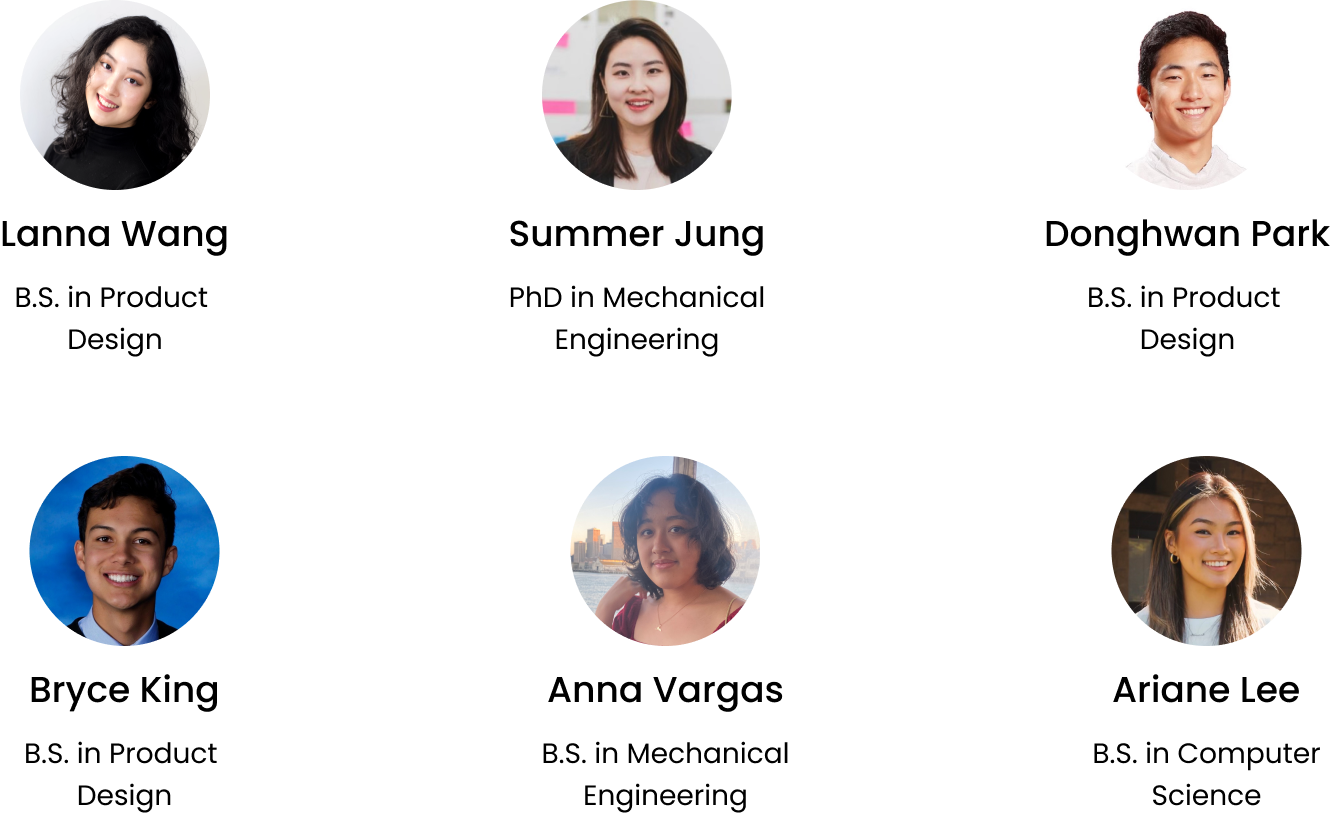
USER RESEARCH
As a self-proclaimed “foodie,” I was eager to delve into user mindsets about the experience of eating inside a car. Each of our team members conducted at least two interviews with a prepared set of questions. The goal of our user research was to understand why people eat in the car (or why they don’t) in order to craft a more enjoyable dining experience.

When I asked users why they choose to eat in cars, I was most surprised by the emotional and psychological themes that arose. Sure, more often than not, the user is simply hungry or in a rush, trying to juggle a bagel and coffee while driving to work. Eating in the car is convenient and it saves time.
However, users told me that eating in the car is a wholly different experience from eating at home or in a restaurant.
The words they used?
“Intimate.”
“Safe.”
“Private.”
Clearly, eating in the car not only fulfills baseline needs of hunger and time efficiency, but it also serves deeper psychological needs. You see, there’s something so liberating and special about eating in the car, especially with friends. One user stated:
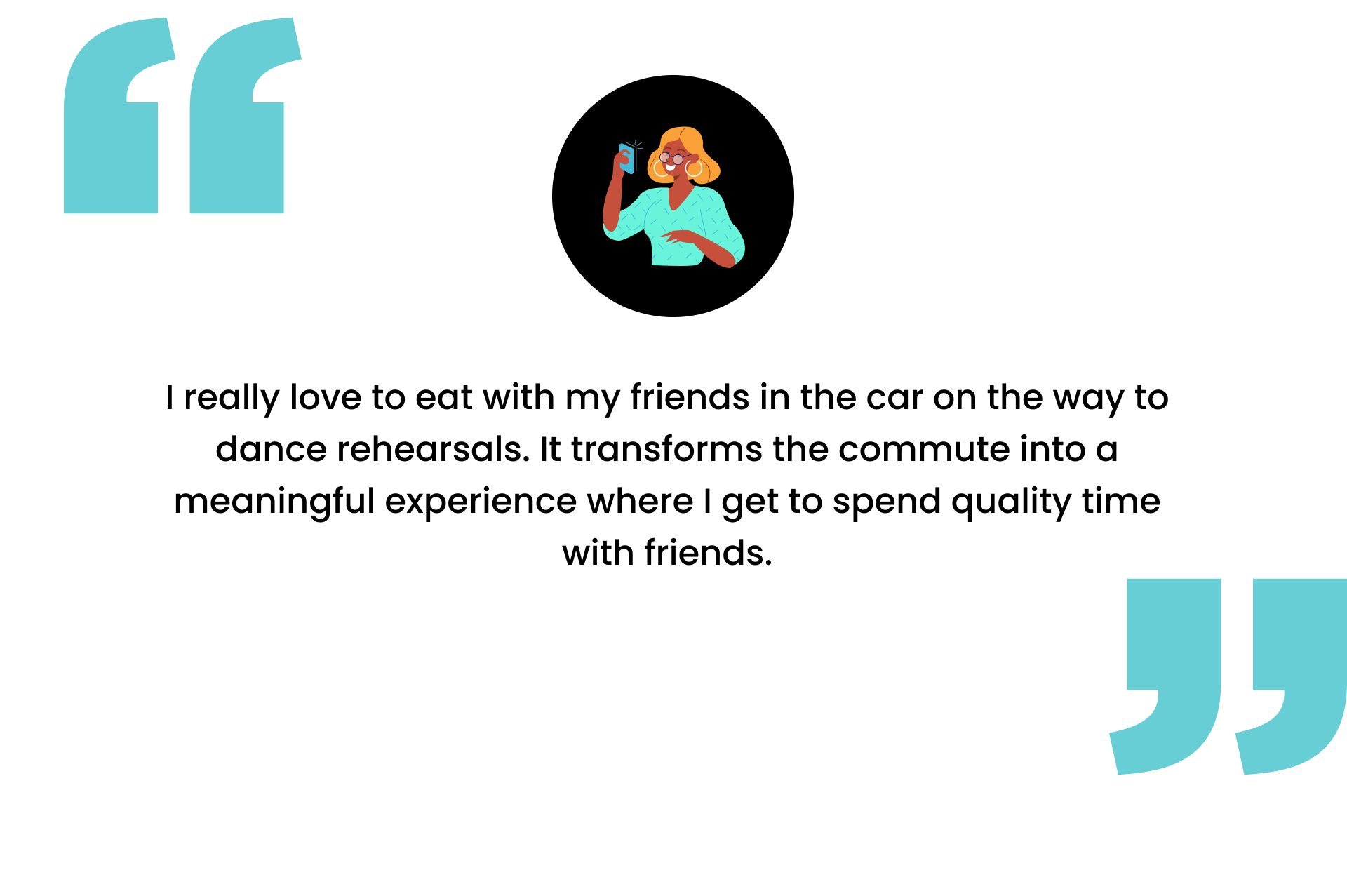
For the introverts out there, a car can be the ultimate safe haven from awkward social situations. According to another user:
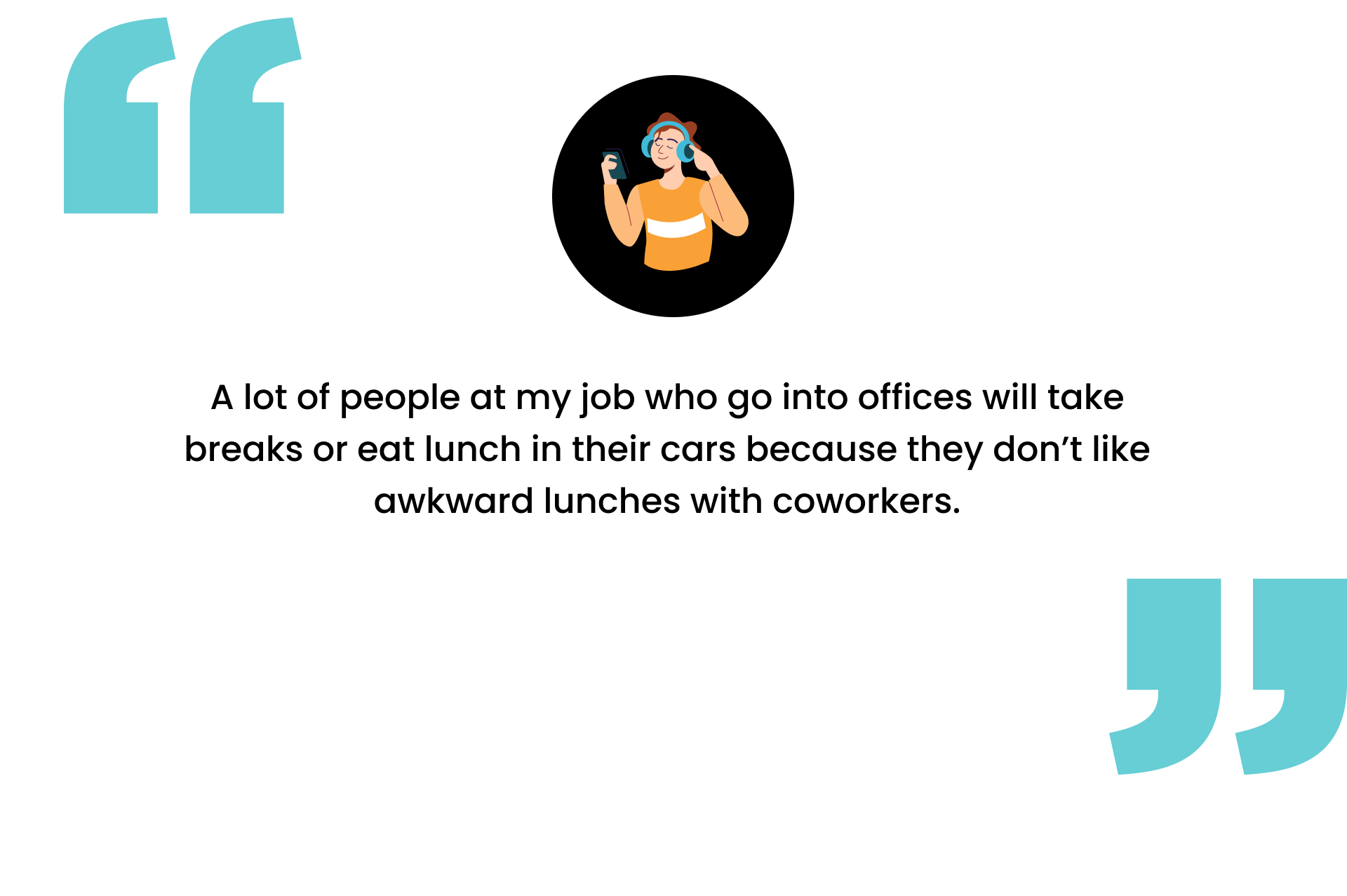
At the other end of the spectrum, what about the users who don’t eat at all in the car?
Take my parents for instance; they would never risk getting crumbs or spilling coffee in the car. For some people, eating in the car is much too messy of an affair–the logistics of preventing messes and maintaining cleanliness sounds like a nightmare to them.
Moreover, based on our findings, it seems that older generations see cars solely as a means of transportation to get from point A to point B. They rarely eat in the car and do not see it as a social setting.
INSIGHTS
Across all 12 interviews, we summarized our findings as follows:

USER NEEDS
Based on the findings from our user interviews, we extracted different categories of user needs in a need hierarchy pyramid (inspired by the infamous Maslow’s hierarchy of needs).
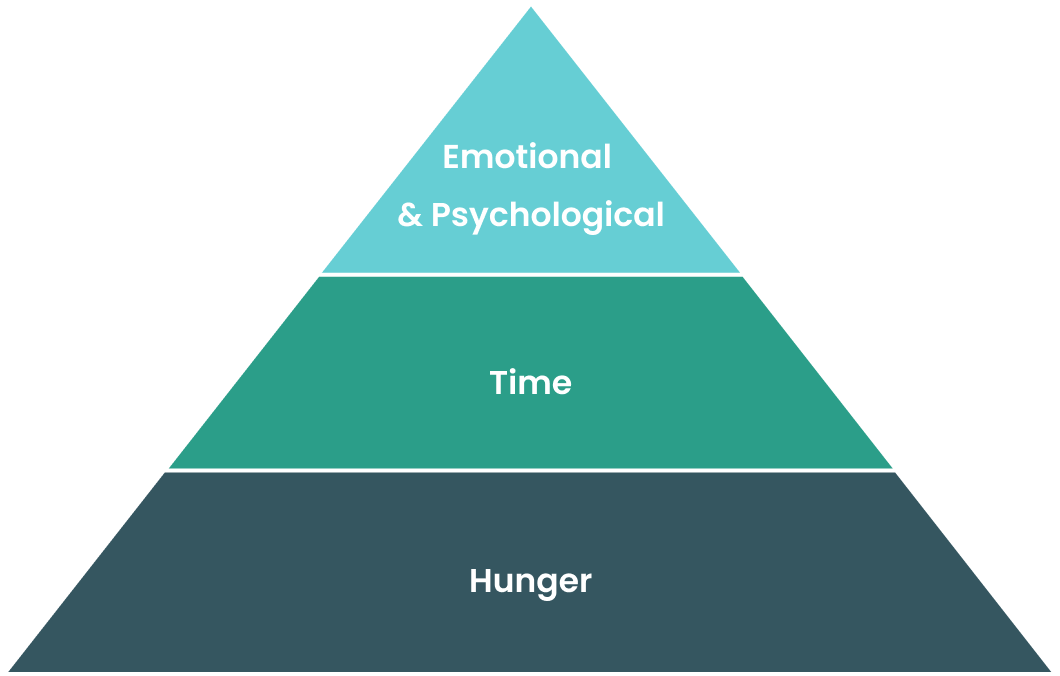
USER PERSONA
To help us clarify our target demographic, we developed a user persona.

HOW MIGHT WE
Before we began to brainstorm solutions, we settled on a “How Might We” statement to keep us focused.
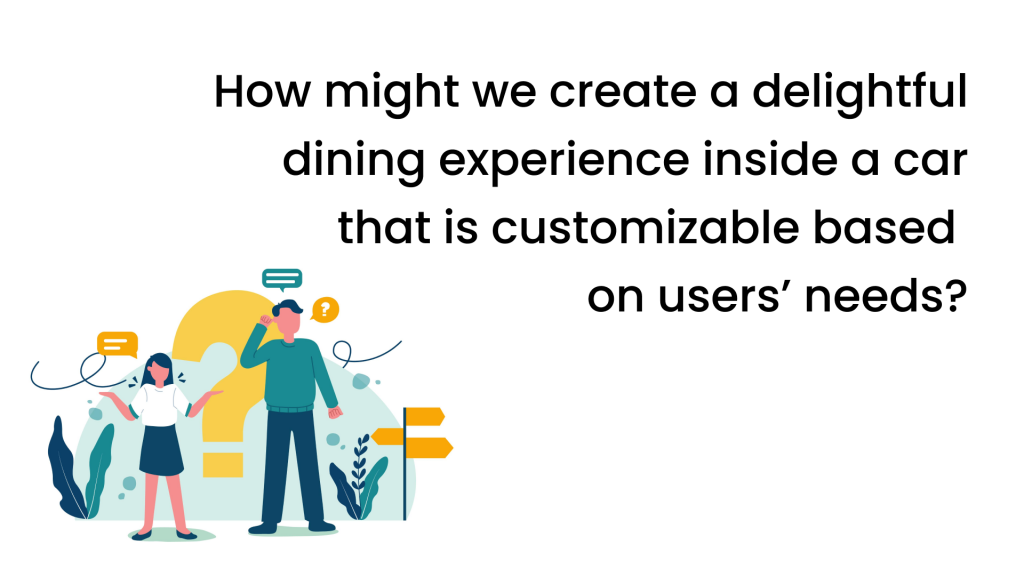
SOLUTION IDEATION
Afterward, we used Mural and Figma to generate as many ideas as possible, under the assumption that the cars of the future will be autonomous electric vehicles.
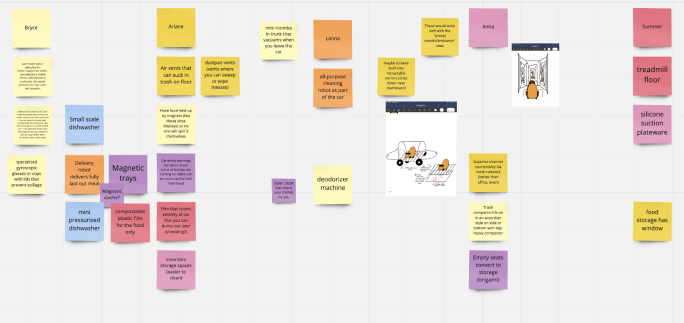
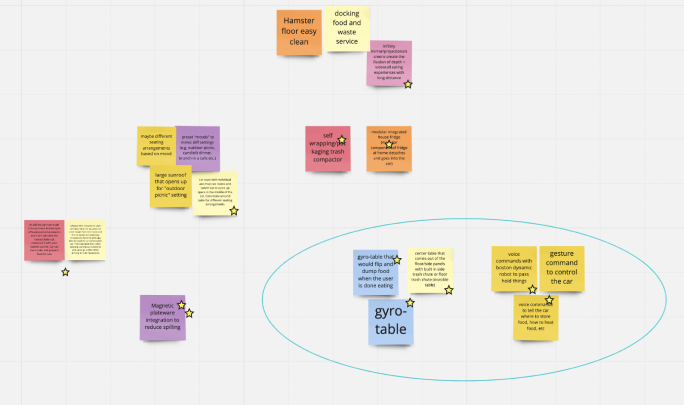
PROTOTYPE
As we began to solidify and visualize our ideas, I was the team’s go-to for artistic renderings and low-fidelity prototyping (or as I call it, glorified crafting).
Below are some sketches I created to demonstrate the gyroscopic table and the aesthetics for the interior of the car.
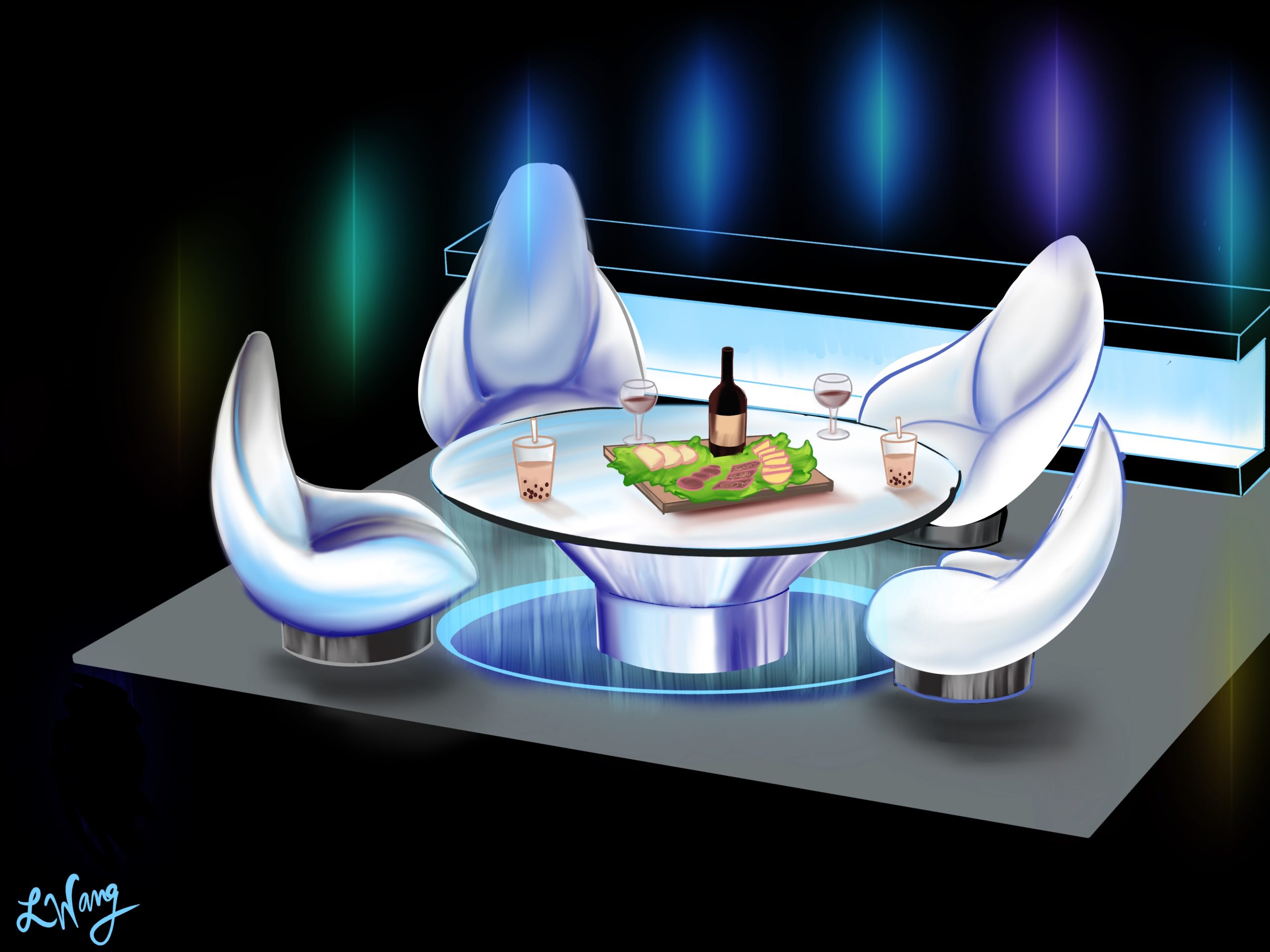
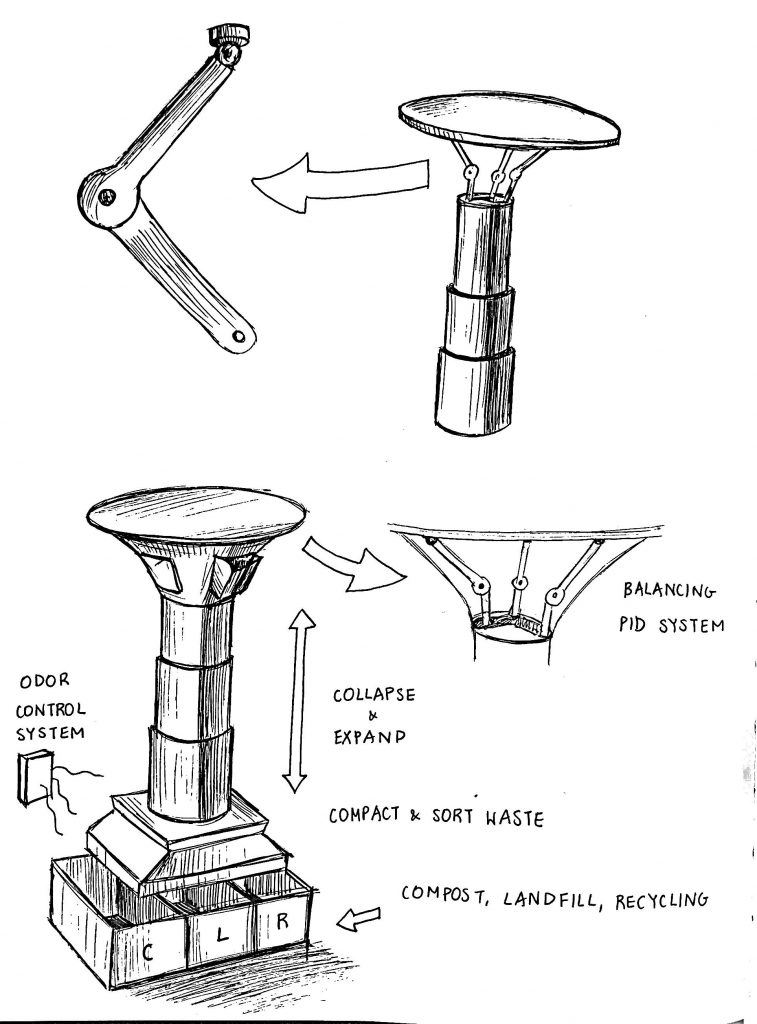
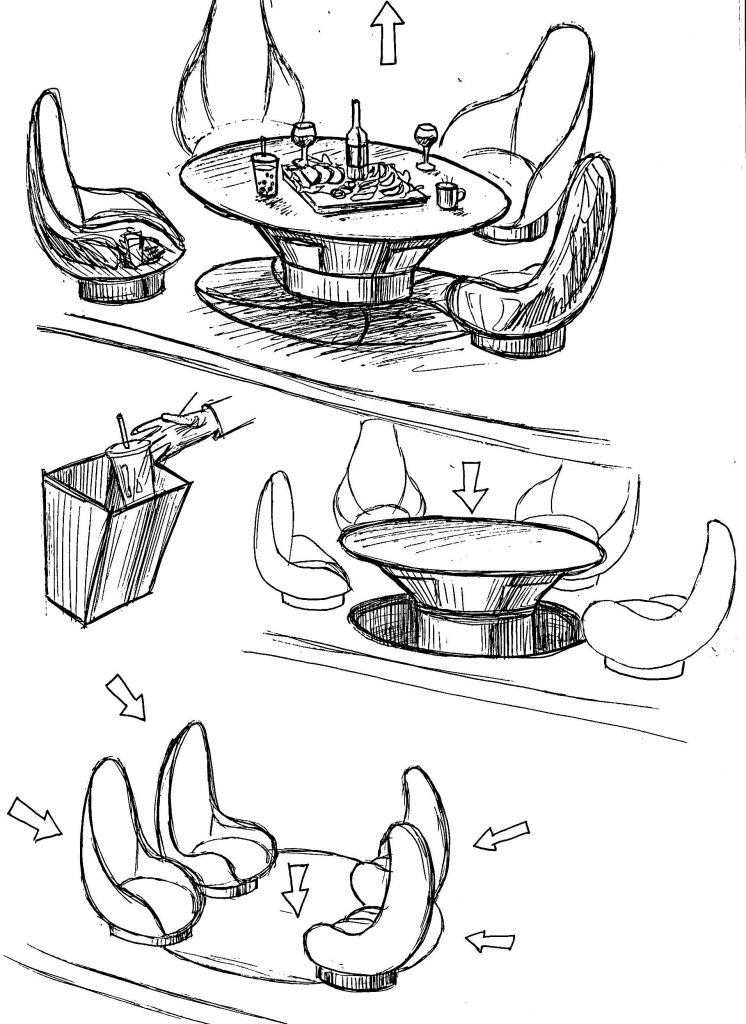
FINAL SOLUTION
Voilà our final solution (affectionately called “Hyundine”)!!!
We presented our solution to Hyundai employees and Stanford-affiliated staff, including:
- Hak Soo Ha: Design Director in Hyundai LA design
- Minsung Kim: VP in Hyundai (Korea) / Head of Open Innovation Strategy Team
- John Suh: Founding Director at New Horizon Studio (Palo Alto)
- Andrew Moir: Senior Design Manager at Hyundai Design North America
- Bomina Yoon: Hyundai Motors Future Strategy Deputy Manager
- Michael Lepech: Stanford Professor in Civil Engineering
- Hosin Min: Founder for ROCK15 (CA)
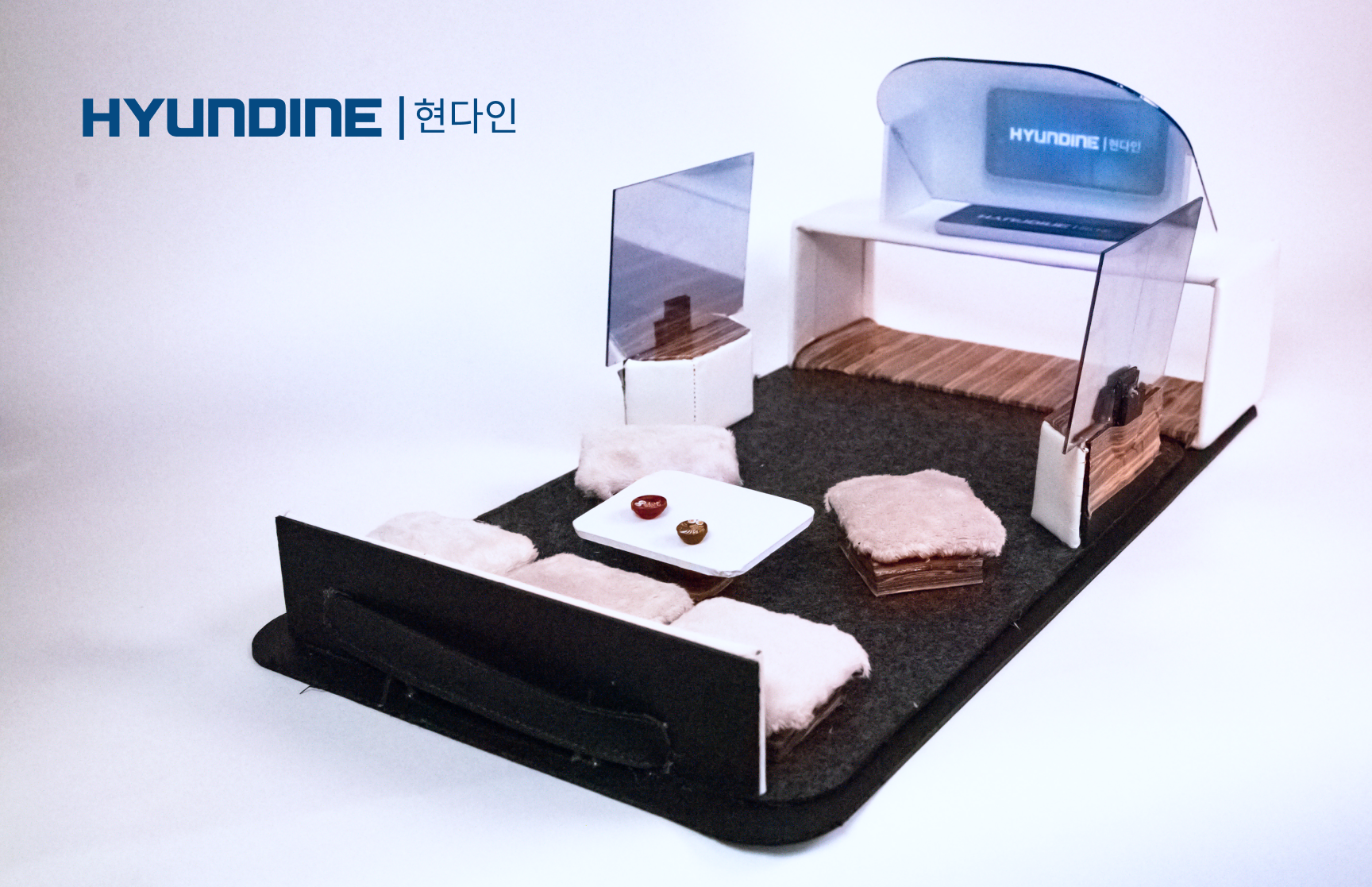
LEARNINGS
Don't Make Assumptions About Users
Prior to user interviews, my entire team assumed that convenience and time efficiency were the main reasons why people eat in the car. If we hadn’t conducted in-depth user interviews, we wouldn’t have discovered the emotional and psychological aspect of eating in the car. Personally, I thought this was the most fascinating part of this workshop!
Needs vs. Wants
Towards the beginning of the workshop, my team focused heavily on the messiness of eating in the car. We assumed that our solution would solely target the “need” to eat without making a mess in the car. As a result, our first rounds of ideation produced some less than stellar ideas: a cleaning robot, fancy cup holders, a built-in vacuum, self-cleaning floors…we didn’t get at the essence of the problem until we started thinking deeper about what users needed, not simply what they wanted.
NEXT STEPS
Who knows what Hyundai is going to do with this project. Will they actually release a self-driving electric vehicle that is optimized for eating? Probably not in the near future.
Additionally, I wonder about the social implications of encouraging people to eat in cars. On the one hand, perhaps this phenomenon would harken back to a glamorous era of dining cars in trains and full-course meals in airplanes. It could pave a new way of thinking about food “on-the-go.” On the other hand, it might detract from one’s experience of eating at home or at a restaurant and exacerbate an already fast-paced society.
In the end, what I admire most is Hyundai’s exploration of unconventional avenues for innovation. Overall, this was a rewarding experience for me, and I am grateful to have contributed to the future of transportation!
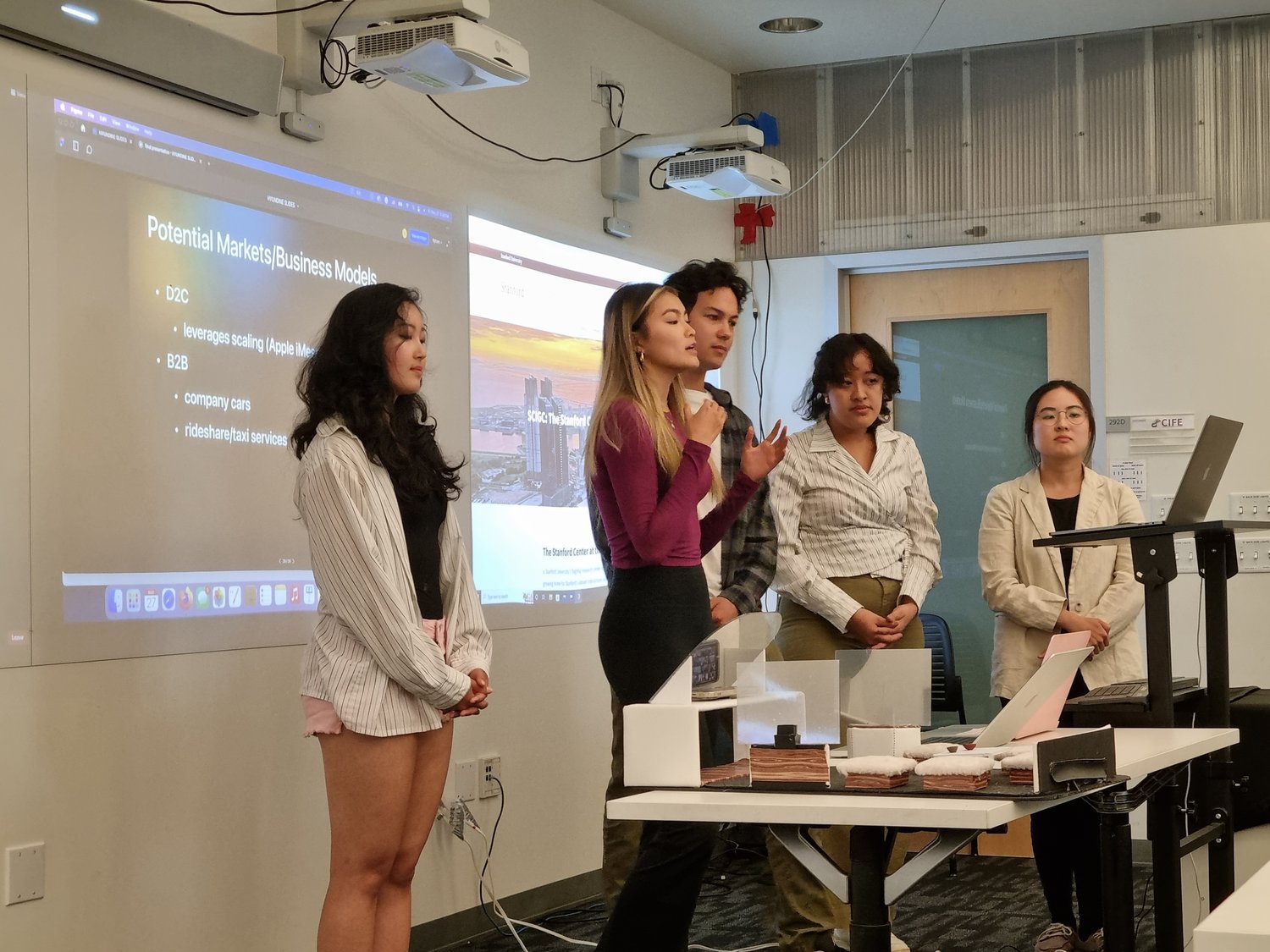
^^^ I may look dead in this photo, but I’m very much alive and excited to be working with Hyundai!

